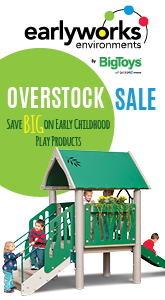If we don't change, we don't grow. If we don't grow, we aren't really living.
-Gail Sheehy
"With science... teachers are prone to bringing feelings and attitudes that pose challenges in implementing a strong and effective science-oriented curriculum," wrote Deborah Moberly and Jennifer Fruend in their January 2014 Exchange article, "Simple Science in Your Classroom." To demonstrate how introducing science into a preschool classroom need not be intimidating, the authors cite this example:
"A master preschool teacher we have worked with for seven years brought her Golden Retriever puppy, Pete, to the child development lab school daily. Pete literally grew up with the center's children: He took naps in his crate at rest time alongside the children; they fed and groomed Pete, made him dog biscuits, and exercised him in the adjacent play yard; they weighed him weekly, and the children charted his growth. Initially, Pete was weighed on an infant scale, which he quickly outgrew. As Pete got older the children developed other means to track his weight gain, which prompted the children's interest in charting their own weight and height as they grew. They first gave Pete a bath in a small plastic tub, which, again, he soon outgrew; that presented another challenge for them to solve. Pete's veterinarian was invited to visit the center. The children soon began dramatizing the various activities the veterinarian completed in their presence as he conducted his examination of Pete. This evolved into dramatizing their experiences with their own physicians."
|
 We know young children are curious and we believe in their creativity, but where do we see disciplined inquiry — the essence of scientific thinking? If we look closely at young children's play, we can identify what children do that is analogous to science. Learn More. We know young children are curious and we believe in their creativity, but where do we see disciplined inquiry — the essence of scientific thinking? If we look closely at young children's play, we can identify what children do that is analogous to science. Learn More.
|
|
 << Previous Issue
| View Past Issues | | Next Issue >>
<< Previous Issue
| View Past Issues | | Next Issue >> 





Post a Comment